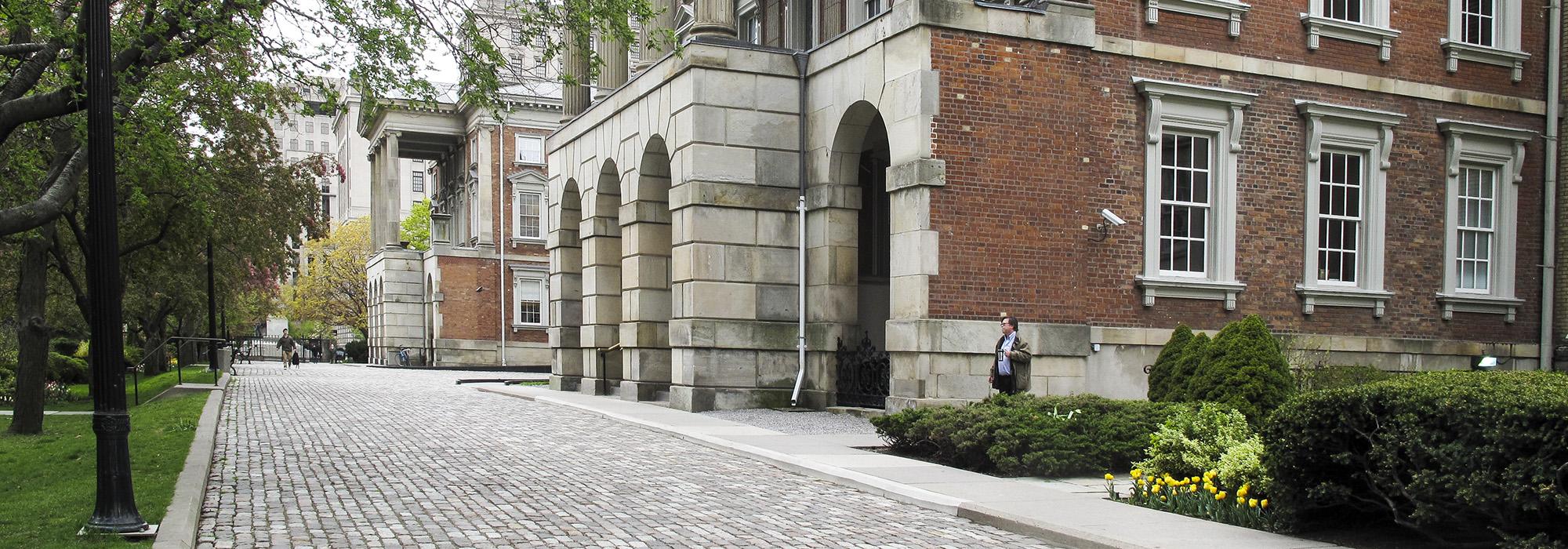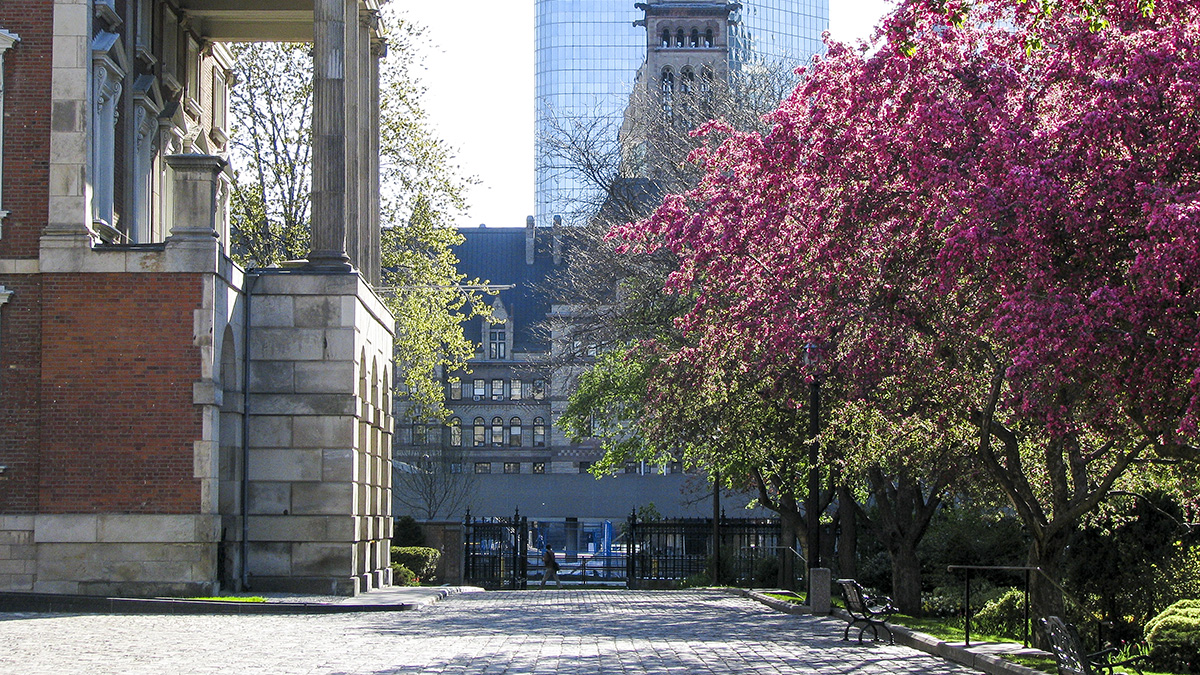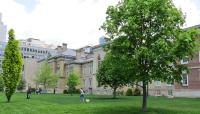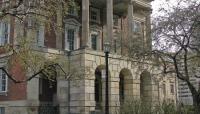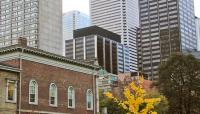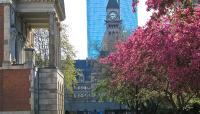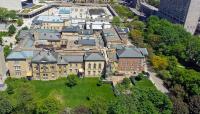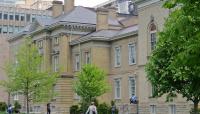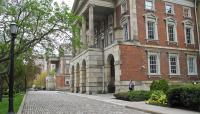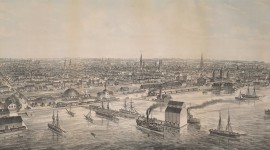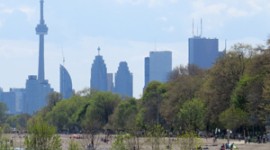Landscape Information
Occupying a city block in downtown Toronto and named for William Osgoode, first Chief Justice of Upper Canada, this Palladian-style building was constructed from 1829 to 1832 to house the Law Society of Upper Canada. Although the initial building, designed by John Ewart with assistance from W.W. Baldwin, has undergone more than fifteen significant additions extending its footprint northward, its original façade remains essentially unaltered. At the time of its construction, the 2.4-hectare parcel around it was pasturage; hence the “cow gates” (allowing only twenty inches of clearance, equally a barrier to a surging crowd) in the Victorian stone-and-iron fence, which was installed in 1867, replacing a picket fence that initially surrounded the property.
Two manicured lawns buffer the building from Queen Street to the south and University Avenue along the west. Cobblestone paths extend from two entrances along Queen Street and meander among horse-chestnuts, lindens, honey locusts, and flowering crabapples before arriving at a wide sett apron (quarried stone paving), edged by planting beds and boxwood. The sett form an elevated carriageway extending the full length of the southern façade, widening between the projecting wings, and leading to gates at either end. The paths and carriageway were likely laid out circa 1843 by architect John Howard. The Victorian-style lamp standards that line them were installed in the 1950s and once stood in nearby Queen’s Park. On the wide lawn fronting the western façade the trees are sparser and younger, and the fence becomes a mere waist-high encumbrance. In 1990 the east wing of Osgoode Hall was designated a heritage property under the Ontario Heritage Act, the building and grounds having been designated a National Historic Site of Canada in 1979.



